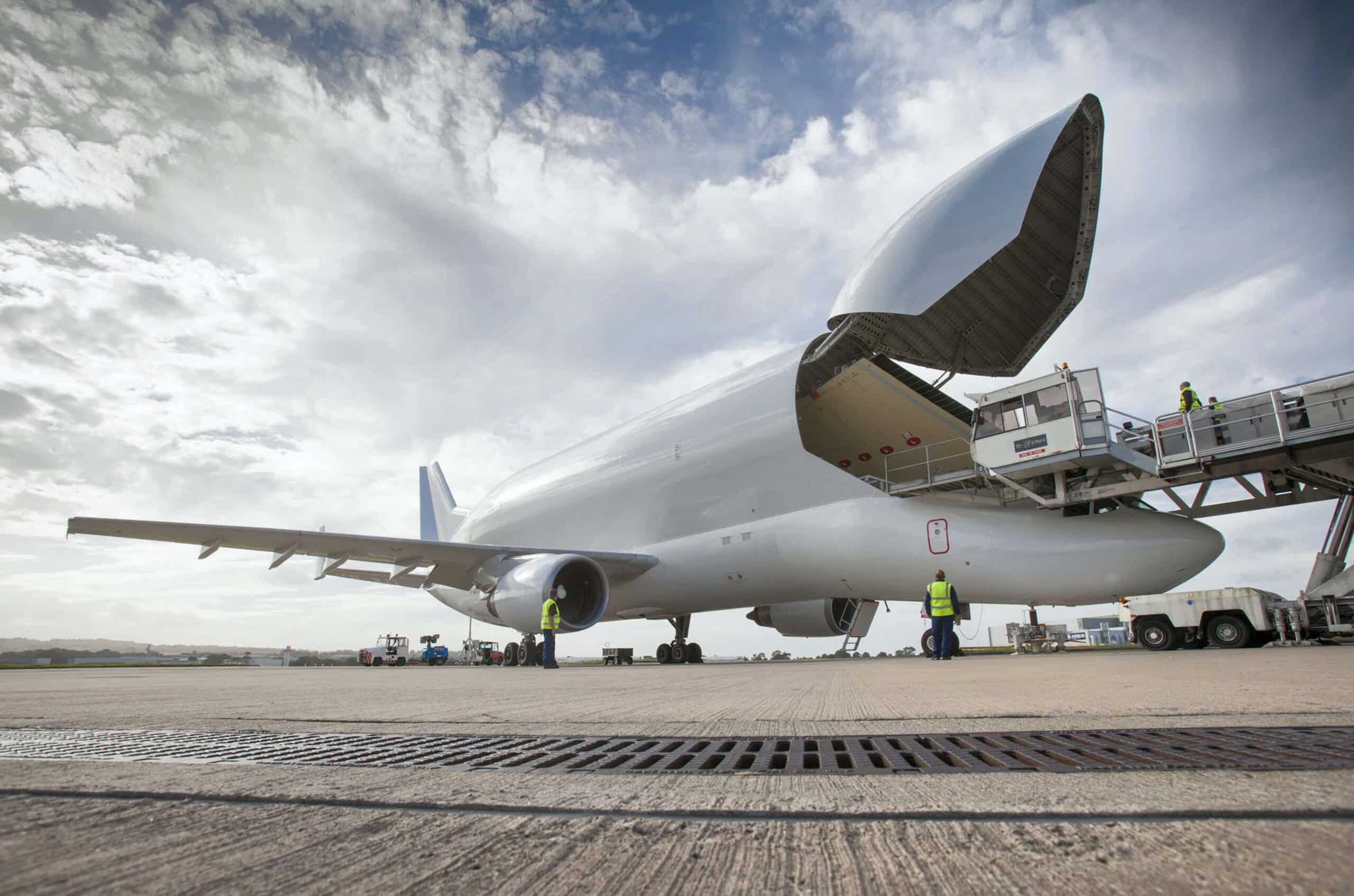Aviation
Airbus Launches Cargo Airline With Beluga Fleet

Customers all over the world will be able to use Airbus’ freighter service for outsized cargo transportation.
Based on the A300-600 design, the Beluga ST super transporter aircraft was completed in 1994. It served as the backbone for the inter-site transportation of major airplane parts for Airbus. Following the introduction of a newer and upgraded version of the Beluga XL, the previously employed 5 Beluga STs are now being used for cargo services.
The first of its services was supplied to Japan in December 2021, when Airbus delivered a brand new helicopter. It was stopped for refueling at several sites along the way, including Poland, Russia, and Korea. Notably, the entire aero plane could be stored within the beluga without having to disassemble it first.
First of its service was offered to japan by on December 2021 by delivering a brand new helicopter from Airbus. During the transit it was stopped to refuel at various points like Poland, Russia and Korea. Notably the whole aircraft could be accommodated inside the beluga without any prior disassembly.
It is dedicated for outsized freight customers. Over the years Beluga fleet has occasionally been called upon over the years to transport outsized cargo such as industrial machinery and other space satellites. Because of it’s unrelated to its normal day to day jobs transporting airbus aircraft sections. After seeing the various demands the airbus finally planned to offer the Freight service for the global customers.
The Beluga benefits all possible market applications, since it possesses the world’s largest interior cross-section of any transport aircraft, accommodating outsized cargo of up to 7.1m in width by 6.7m in height.
Short specification of Beluga ST
It was introduced in the year 1995. It can carry up to 48 tons of the load and has an empty weight around 86.5 tons.
It can hold up to 23,860 litters of the fuel and it is powered by GE CF6 turbofan can produce 257 kN thrust.
It has maximum speed of Mach 0.7 and has the range up to 2,779 km and goes up to 35,000 ft. of ceiling reach.
The cargo loader ‘falls asleep’ on an IndiGo flight en route to Abu Dhabi,

Airlines
Air India to Launch aircraft maintenance training institute in Bengaluru

Air India, one of India’s leading global airlines, is set to establish a Basic Maintenance Training Organization (BMTO) in Bengaluru.
This institute will offer a comprehensive Aircraft Maintenance Engineering (AME) program certified by the Directorate General of Civil Aviation (DGCA). The program will follow an integrated 2+2 year structure, combining classroom learning with practical, hands-on training.
This initiative is part of Air India’s broader goal of creating a robust aviation ecosystem in India. With plans to expand its fleet and strengthen its operations, the airline aims to build a skilled workforce of maintenance engineers, making the organization self-reliant while supporting its ambitious transformation journey.
This country tops visa rejections in the popular Schengen countries
To bring this vision to life, air india has partnered with Bengaluru Airport City Limited (BACL), a subsidiary of Bangalore International Airport Limited (BIAL). Together, they will develop a state-of-the-art facility spanning 86,000 square feet at Bengaluru Airport City.
This purpose-built campus will feature modern classrooms, well-equipped laboratories, and qualified trainers to deliver world-class education and training. The institute is expected to become operational by mid-2026.
The BMTO will be located close to Air India’s new 12-bay Maintenance, Repair, and Overhaul (MRO) facility, also set to open in Bengaluru by early 2026. The AME program will begin with two years of academic coursework, followed by two years of practical training at the MRO, ensuring students receive hands-on experience adhering to industry standards.
Sanctions & Engine Issues Ground Half of Russia’s A320neo fleet
In the meantime, Air India has introduced a Cadet AME program in collaboration with reputable institutions in Bengaluru and Hyderabad.
This ensures continuity in its commitment to developing skilled aircraft maintenance engineers while the BMTO facility is under construction. The program also allows students to pursue a bachelor’s degree through university partnerships, enhancing their career and academic opportunities.
With this initiative, air india plane aims to address the growing demand for skilled professionals in aircraft maintenance and engineering, air india new planes contributing to the development of India’s aviation sector and creating specialized career paths for aspiring engineers.
-

 Aviation2 months ago
Aviation2 months agoMicrosoft Flight Simulator Raises $3 Million to Bring Back the An-225 Mriya
-

 Airlines2 months ago
Airlines2 months agoQatar Citizens Can Travel to the United States Without a Visa
-

 Aviation2 months ago
Aviation2 months agoQatar Airways bans these new Electronic Devices on plane
-

 Airlines2 months ago
Airlines2 months agoJapan Airlines Rolls Out Free Domestic Flights to International Passengers
-

 Defence2 months ago
Defence2 months agoWhich Country Has the Largest Fleet of Fighter Aircraft?
-

 Airport2 months ago
Airport2 months agoWestern Sydney Airport Welcomes Its First Plane After 6 Years of construction
-

 Travel2 months ago
Travel2 months agoQatar Airways Launches Four Additional Flights from Amsterdam
-

 Aviation2 months ago
Aviation2 months agoDid you know ? Once Boeing 747 carried 1088 passenger in 1991








